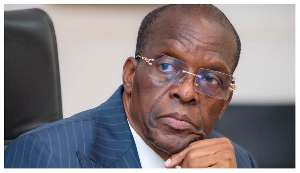SEND GHANA has launched a fertilizer subsidy report in Accra, which assesses the design and implementation of fertilizer subsidy programme and benefits to farmers in terms of influence on outputs, productivity and incomes.
Government introduced a nation-wide fertilizer subsidy programme, covering three types of inorganic fertilizer (Sulphate of Ammonia, Urea, and Compound fertilizer) in 2008.
The target was to increase the country's fertilizer application rate to at least 50 kilogrammes (Kg) per hectare (ha) as recommended in the Medium Term Agricultural Sector Investment Programme of the Ministry of Food and Agriculture (MOFA).
Mr John Nkaw, Programme Officer, SEND-Ghana said eight years into the programme, its good intentions are being plagued with challenges, which are threatening the effectiveness and sustainability of the programme.
These challenges include sustainable funding and absence of an efficient quality control mechanism that ensures that the fertilizer supplied to farmers is of high quality and satisfies different soil types.
So far, a total of 724, 493 metric tons (Mt) of fertilizer has been subsidised at a cost of GH¢ 345, 244 million from 2008 to 2015.
The biggest Allocation subsidy of GH¢176,746 million was provided in 2013.
Under the subsidy programme, government goes into a public-private- partnership in which government absorbs part of the unit cost (e.g transportation, loading, etc.) and profit margins per bag of fertilizer supplied to farmers.
Mr Nkaw said the study revealed delays in supply chain, which ultimately affects the final consumer (farmers).
“For instance, it was revealed during an interaction with a distributor in West Mamprusi that “at the import levels there are delays in obtaining import guarantees from government to import fertilizer…this affects the distribution chain resulting in farmers not getting fertilizer at the time it is most needed”.
The report said to increase its investments and take advantage of other funding opportunities in the private sector, there is the need to increase resource allocation for the supply of more fertilizer.
There is the need for education of smallholder farmers on the proper agronomic practices such as application of fertilizer, but also take steps to effectively monitor their adoption rate among farmers to realize the full benefits of education on crop production.
It is also important for government to allocate funds for monitoring and supervision of the supply chain–internal or external- to continually support the interventions that prevent price variations of subsidized fertilizer.
Mr Nkaw said in order to ensure that the fertilizer subsidy programme reaches its target beneficiaries and attains the goal of increased application of fertilizer and productivity by farmers, it is important that MOFA takes pragmatic steps to collaborate with companies to establish distribution outlets in communities.
This would help bring the fertilizer closer to farmers and thereby reduce the cost related to long distance travels.
Access to fertilizer at the right time is critical to getting a good yield. It is therefore recommended that government takes steps to ensure that fertilizers are released at the beginning of the farming season.
This would ensure that farmers have access to the product at the right time in order to maximise benefits of the programme.
The study covered 2011 to 2015 farming season and was carried out in seven districts comprising two districts each in Upper East and Upper West Regions and three in the Northern Region.
Business News of Tuesday, 15 December 2015
Source: GNA

















